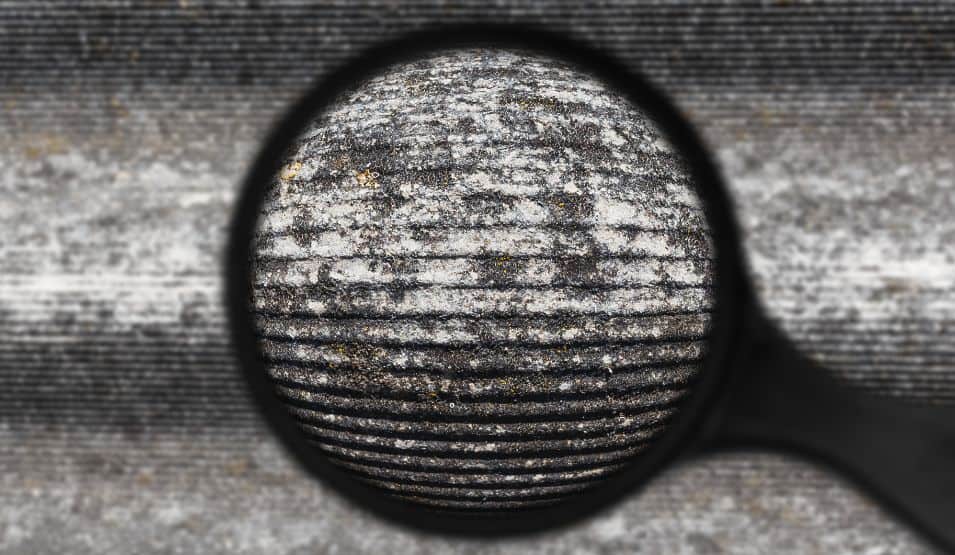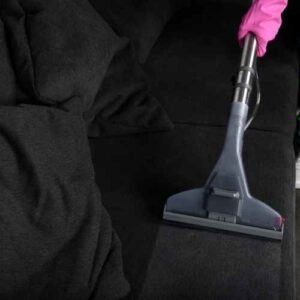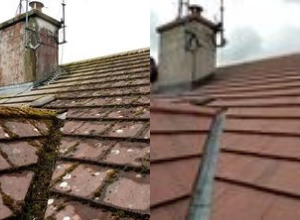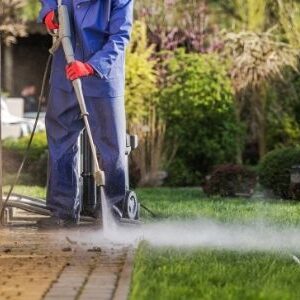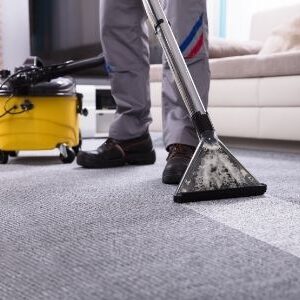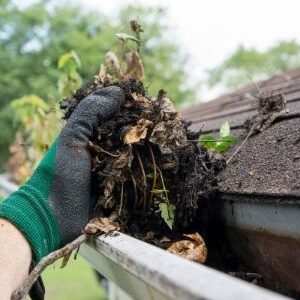How To Clean Black Streaks Off Roof? Your home’s roof is not only a protective barrier against the elements but also a significant aesthetic feature. However, if you’ve noticed unsightly black streaks marring its surface, it’s a sign of trouble. In this guide, we’ll delve into the causes of these black streaks, the potential harm they can cause, and most importantly, how to address them effectively.
What Exactly Is This Black Stuff On Your Roof?
When you glance up at your roof and notice those ominous black streaks, your first instinct might be to dismiss them as normal dirt, mildew, or mould. However, what you’re actually seeing is a persistent organism known as Gloeocapsa magma—an algae that thrives in specific environmental conditions. This resilient organism settles on roofs, particularly those with asphalt shingles, and begins its colonisation process.
Once airborne spores of Gloeocapsa magma land on the roof’s surface, they find a welcoming environment to thrive. The limestone filler commonly present in asphalt shingles serves as a nutrient source for the algae, enabling it to increase and spread. Factors such as shade from nearby trees and the accumulation of organic debris further facilitate algae growth, creating distinct black streaks or patches on your roof.
Over time, these black streaks not only detract from the aesthetic appeal of your home but can also compromise the integrity of the roofing material if left untreated. Therefore, it’s essential to understand that what may appear as normal dirt or mould is a resilient algae species that requires specific measures for effective removal and prevention.
To address algae stains and prevent their regrowth, several strategies can be employed. Installing zinc strips along the ridges of your roof can inhibit algae growth by releasing zinc ions when it rains, creating an unfavourable environment for algae. Additionally, regular roof maintenance, including cleaning with a gentle low-pressure rinse, can help remove existing algae and prevent its regrowth. Using safety equipment such as protective gloves and goggles, as well as following the cleaning process on a cool or overcast day, ensures safe and effective cleaning without causing damage to the roofing shingles.
By understanding the factors that contribute to algae growth and implementing appropriate preventive measures, you can protect your roof from damage and maintain its appearance for years to come. So, the next time you spot black streaks on your roof, remember that it’s not just dirt or mould—it’s a resilient algae species that requires proactive measures for effective removal and prevention.
What Causes Roof Algae to Grow?
Roof algae, particularly the type known as Gloeocapsa magma, thrive under specific environmental conditions. Understanding these factors can help you take proactive steps to prevent and address algae growth on your roofs.
Humid Environment:
Roof algae flourish in humid climates where moisture levels are high. In Ireland, where the climate is characterised by regular rainfall and damp conditions, roofs are particularly susceptible to algae infestation.
Shade:
Lack of sunlight and shade from nearby trees or structures can promote algae growth on roofs. Shaded areas retain moisture for longer periods, creating an environment conducive to algae proliferation. Trees overhanging the roof not only provide shade but also contribute organic debris, further fueling algae growth.
Organic Debris:
The accumulation of leaves, branches, and other organic debris on the roof’s surface provides nutrients for algae to thrive. Organic matter decomposes over time, releasing compounds that algae can use as a food source. Regular removal of debris can help mitigate algae growth on the roof.
Roofing Material:
Certain roofing materials, such as asphalt shingles, provide an ideal substrate for algae colonisation. The limestone filler used in asphalt shingles serves as a nutrient source for algae, facilitating their growth and spread. Other materials, such as metal roofs, are less prone to algae growth due to their smooth and non-porous surface.
Moisture Retention:
Moisture retention on the roof’s surface, whether from rainfall, condensation, or dew, creates an environment favourable for algae growth. Poor drainage systems or clogged gutters can exacerbate moisture retention, leading to accelerated algae proliferation.
Environmental Pollution:
Airborne pollutants, such as dust, pollen, and pollution, can settle on the roof’s surface and provide nutrients for algae growth. In urban areas or regions with high levels of air pollution, roofs may be more susceptible to algae infestation.
Do You Need to Remove Roof Algae? Is It Harmful?
While roof algae may not pose an immediate threat to the structural integrity of your roof, its presence can have several negative implications. First, aesthetically, the black streaks or patches left behind by algae can detract from the curb appeal of your home, impacting its overall appearance and potentially lowering its resale value.
Moreover, over time, algae growth can lead to the deterioration of roofing materials, particularly asphalt shingles, resulting in premature ageing of the roof and necessitating costly repairs or replacement. Additionally, there may be potential health risks associated with algae growth on roofs, as it could release airborne spores that exacerbate respiratory issues or allergies, especially for individuals with sensitivities.
Lastly, algae-infested roofs may absorb more heat from the sun, leading to increased temperatures in the attic and interior spaces, which can strain HVAC systems and contribute to higher energy bills, particularly during warmer months. Given these concerns, it’s advisable to address roof algae promptly through regular maintenance, including algae removal and prevention measures, to mitigate these risks and prolong the lifespan of your roof.
Can You Clean Black Streaks Off Your Roofing?
Yes, you can clean black streaks off your roofing, but it’s important to approach this task with caution as this is not just simply getting a brush and a garden hose and start scrubbing task to remove the roof stains. While the temptation to tackle it yourself may be strong, there are several reasons why hiring a professional roof cleaner like Spooners Cleaning is the wiser choice.
First and foremost, cleaning your roof yourself can pose significant safety risks. Climbing onto the roof without proper training and equipment can result in accidents and injuries. Additionally, using the wrong cleaning products or techniques can cause damage to your roofing materials, leading to costly repairs or even the need for a full roof replacement.
One common mistake homeowners make is using chlorine bleach to clean and remove roof stains. While bleach may seem like a powerful cleaning agent, it can actually do more harm than good. Not only can it corrode metal components of your roof and harm surrounding vegetation, but it can also pose health risks if not used properly.
Professional roof cleaners like Spooners Cleaning have the experience and expertise needed to safely and effectively remove black streaks from your roof. We use specialised roof cleaning product to prolong algae regrowth and techniques tailored to your specific roofing material to ensure optimal results without causing damage shingles. Additionally, we have the right tools for the job, including low-pressure power washer and safety harnesses, to perform the cleaning safely and efficiently.
By entrusting the job to professionals, you can rest assured that your roof will be cleaned properly, without risking your safety or causing damage to your property. So, while it may be tempting to DIY, the smart choice is to leave roof cleaning to the experts and enjoy peace of mind knowing that your roof is in good hands.
Tips on how to protect your asphalt roof shingles from black streaks
Algae growth on asphalt roof shingles can lead to the formation of unsightly black streaks, detracting from the appearance of your home. Here are some effective tips to prevent black streaks and maintain the integrity of your roof:
Choose Algae-Resistant Shingles For A Lasting Solution
Algae-resistant shingles offer a reliable solution to combat black streaks and maintain the pristine appearance of your roof. Here’s why they’re an excellent choice:
They’re made to resist algae growth
Algae-resistant shingles are specifically engineered with materials that deter the growth of algae. This proactive measure helps to prevent the formation of black streaks, ensuring that your roof remains clean and attractive for years to come.
They look attractive
In addition to their practical benefits, algae-resistant shingles come in a variety of colours and styles, allowing you to enhance the aesthetic appeal of your home. Whether you prefer a traditional or modern look, you can find algae-resistant shingles that complement your home’s exterior.
They’re super durable
Algae-resistant shingles are designed to withstand the rigours of the elements while maintaining their structural integrity. Their durability ensures long-lasting protection for your roof, providing peace of mind knowing that your investment is well-protected.
By choosing algae-resistant shingles for your asphalt roof, you can effectively prevent black streaks and preserve the beauty and longevity of your home’s exterior.
We hope this post about “How To Clean Black Streaks Off Roof” has helped you realize the importance of cleaning off black spots on your roof. If you’re tired of those pesky black streaks marring the beauty of your roof, now is the perfect time to take action. Our professional roof cleaning service is here to help you reclaim the pristine appearance of your home’s exterior. For a limited time, we’re offering a special promotional rate of only €570 for roof cleaning in counties Tipperary, Laois, Limerick, Kildare, and Kilkenny.
Don’t let algae stains diminish the curb appeal of your property any longer avail our roof cleaning package and contact us today to schedule your roof cleaning and restore your roof to its former glory.

